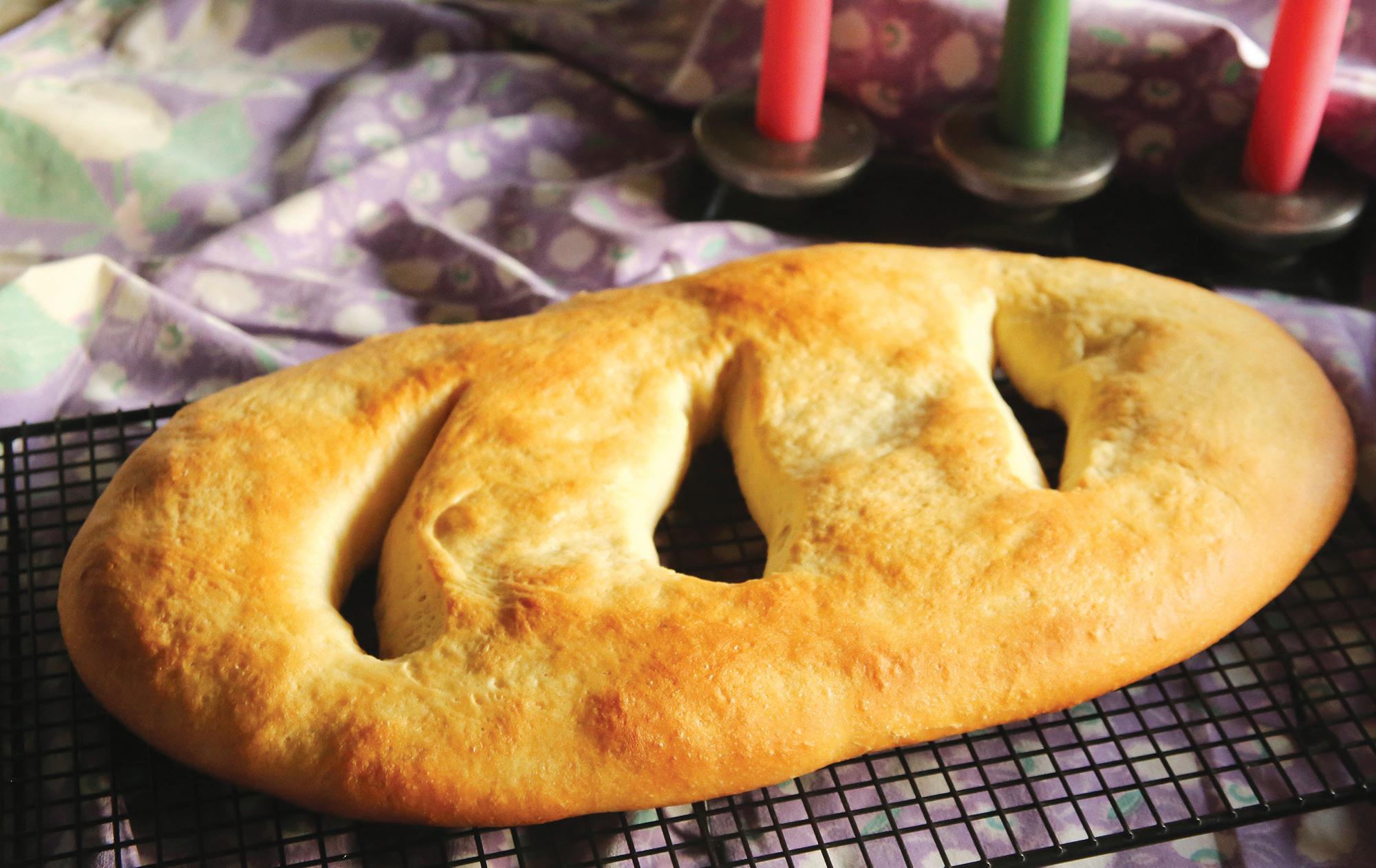
3 minute read
Mixing Bowl
HOLIDAY TRADITION A slightly sweet, traditional French Christmas bread from Provence is meant to be torn, never sliced or cut.
Tarmo Hannula
Advertisement
Sweet olive oil bread
By SARAH RINGLER
Provence, in the south of France, is full of Christmas holiday traditions. Biblical myths persist about Jesus being born there and Mary Magdalene spent the last years of her life on the mountain of La Sainte Baume; the area holds strong religious traditions.
One is the Tradition of the 13 Desserts, of which this bread, La pompe à huile, is one. It is a soft, sweet, orange scented bread that is supposed to be torn and shared, never cut. According to Thirza Vallois of France Today, the recipe could be as old as the city of Marseille, more than 2,600 years ago. This particular recipe is from Caroline Craig’s cookbook, “Provence.”
Measurements may seem a little unusual because I had to convert them from metric to the American measurements and to do that, I had to round off and approximate. Luckily, although bread making has some firm requirements, the ingredients can be a little inexact. Flour can vary drastically. This recipe calls for flour that is made for bread which is usually called hard or strong flour. It has more gluten than pastry flour and reacts better with yeast. I used a little Durum flour which gave the bread a warm, yellow hue.
Another factor in breadmaking is the bowl. A nice ceramic bowl that is only used for yeast breads over the years, according to writer and journalist Alexander Cockburn, allows for the colonization of wild yeasts present in the air: “The dough-encrusted towel, the unsterile bowl, all play their part.” The special flavors of San Francisco sourdough come from its wild yeast that are unique to that part of the world.
La pompe à huile translates from French as, oil pump, in case you’re curious; I could find no explanation why a bread from the Tradition of the 13 Desserts would have that name.
LA POMPE À HUILE
Starter:
3 1/2 teaspoons dried yeast 1/4 cup warm water 3/8 cup or 6 tablespoons flour 1 teaspoon sugar
Dough:
1/4 cup water 2 cups white bread flour plus more for kneading 1/4 cup sugar 1/2 teaspoon salt 3 tablespoons orange blossom water 1/3 cup plus 1 tablespoon olive oil
Parchment paper
First make the starter. In a small bowl, combine warm water, 3/8 cup of the flour and 1 teaspoon of sugar. Add the yeast and beat until smooth with a fork. The mixture should be a thick liquid. Cover the bowl with clingfilm or a clean cloth and set aside for 1 hour until the dough has increased in size and you can see bubbles on its surface.
Sift the remaining flour into a mixing bowl. Make a well, then add the prepared starter, 1/4 cup water and remaining sugar followed by the salt, orange blossom water and olive oil. Combine, then cover and set aside for 5 minutes for the flour to absorb some of the liquid.
Coat your bread bowl with a light coat of olive oil.
Transfer the dough to a stand mixer or a clean, dry, lightly floured surface. The dough may be sticky. Start to knead the dough. If it is too dry, add a little more warm water. Continuously knead, adding a bit more flour if necessary, for 15 minutes until a stretchy, springy dough has formed. Shape into a ball and put into the oiled bowl. Cover the bowl with clingfilm and place in a warm, draft-free spot to rise. Once the dough has doubled in size, usually after 2-3 hours, punch it down and knead once more for a few moments.
Line a baking tray with parchment paper and place the dough on the paper. Roll into an oval shape, about 1/2 inch or 1 centimeter thick. Using a sharp knife, cut three diagonal slits in the center across the dough but don’t go to the edge. Use your fingers to enlarge the openings. Cover with clingfilm or a towel and set in a warm place for 1-2 hours. Towards the end, preheat the oven to 390 degrees.
Place the loaf in the oven and bake for 15-20 minutes, until lightly golden. Remove from the oven and place on a wire rack. Once cool, keep wrapped cloth or in tin until ready to serve.

